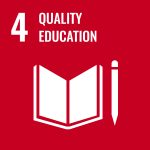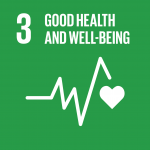 In contrast to the first and second days of the MIDSEA Summer School 2025 at the MICC Building, The Alana Yogyakarta Hotel and Convention Center, which focused on the standard SIR infectious disease model, the third Simulation Track meeting on June 25, 2025, focused on the static network model. The track, attended by 14 participants from various countries including Indonesia, the Philippines, Thailand, and Singapore, began with a discussion of the homogeneous mixing assumption used in the standard SIR model, which states that everyone has an infection risk dependent on the number of infected individuals in a population.
In contrast to the first and second days of the MIDSEA Summer School 2025 at the MICC Building, The Alana Yogyakarta Hotel and Convention Center, which focused on the standard SIR infectious disease model, the third Simulation Track meeting on June 25, 2025, focused on the static network model. The track, attended by 14 participants from various countries including Indonesia, the Philippines, Thailand, and Singapore, began with a discussion of the homogeneous mixing assumption used in the standard SIR model, which states that everyone has an infection risk dependent on the number of infected individuals in a population.
Prof. Alexander Richard Cook, Deputy Dean for Global Health at the Saw Swee Hock School of Public Health, National University of Singapore (NUS), opened the meeting by providing an example of why the assumption of homogeneous mixing in the standard SIR model does not adequately represent disease spread: if A infects B, C, and D, B’s efforts to infect others become futile because B is likely to interact with C and D, who are already infected. To modify this assumption, disease spread can be modeled as a network in the form of a graph. In this graph, edges represent interactions or contacts, and vertices (or nodes) represent individuals. Prof. Cook explains that if the network is fixed from the start of the spread and does not change, then the model constructed is called a static network model.
After creating code to visualize graphs representing networks using RStudio, a discussion was held on several basic models used to generate random networks in graph form, namely the Erdős–Rényi-Gilbert model and the Barabási–Albert model, along with how to create the code for them. However, since both of these models still have limitations in representing graph nodes or edges, Prof. Cook also discussed a study on “romantic networks” in American high schools known as Jefferson High and then asked participants to try learning the code related to this real-world network.
At the end of the third Simulation Track meeting, specifically during the activity session, a case study problem was presented regarding the spread of disease in Edinburgh of the Seven Seas. The purpose of this problem was to enable participants to conduct a realistic static network simulation based on one of the most isolated human populations, and this session was highly interactive due to the complexity of the program code that had to be created. Additionally, a second problem was provided for study and completion outside the track, focusing on disease spread simulation in a static network. The discussion for this problem will be conducted at the next meeting on June 27, 2025.
Keywords: MIDSEA, Modelling, Infectious Diseases Modelling
Author: Citra Rizqin Sulistyaningsih
Photo: Lucetta Amarakamini


